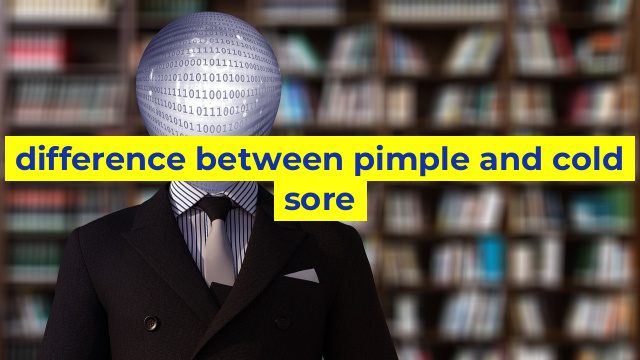The Difference Between a Pimple and a Cold Sore
Introduction
Pimples and cold sores are two common skin conditions that can be easily confused, especially for those who are not familiar with the symptoms of each condition. However, they are two different things and require different treatments. In this article, we will look at the main differences between pimples and cold sores.
Pimples
Pimples are a type of inflammatory skin condition that is caused by excess oil production, bacteria, and dead skin cells. They usually appear as small, red bumps on the skin, filled with white or yellow pus. Pimples can occur on any part of the body, but they are commonly found on the face, neck, and back.
The main cause of pimples is hormonal changes, especially during puberty, which triggers the overproduction of sebum, the natural oil produced by the skin. Other factors that can contribute to the development of pimples include stress, poor diet, and genetics.
Cold Sores
Cold sores, also known as fever blisters, are caused by the herpes simplex virus (HSV) and are characterized by small, fluid-filled blisters that appear on or around the lips, nose, and mouth. Cold sores are highly contagious and can be easily spread through close contact, such as kissing or sharing utensils.
The first symptoms of cold sores usually appear within two to three days of infection and include tingling or burning sensation on the affected area. The blisters then develop and turn into scabs before healing. Cold sores are more likely to occur during times of stress or illness, as well as exposure to sunlight and extreme temperatures.
Differences between Pimples and Cold Sores
While both pimples and cold sores can be unsightly and uncomfortable, they have different causes and symptoms. Pimples are not contagious and usually appear as red, inflamed bumps filled with pus. On the other hand, cold sores are caused by a virus and appear as small blisters that can be painful and itchy.
Pimples can be treated with topical creams, antibiotics, or other acne treatments, while cold sores require antiviral medications to help reduce the severity and duration of symptoms. It is important to note that cold sores can recur, while pimples usually go away on their own or with treatment.
Conclusion
In summary, understanding the differences between pimples and cold sores can help you identify the symptoms and seek appropriate treatment. While pimples are caused by excess oil production, bacteria, and dead skin cells, cold sores are caused by a virus and are highly contagious. If you are experiencing any unusual symptoms or have concerns about your skin condition, it is best to consult a healthcare provider for diagnosis and treatment.
Table difference between pimple and cold sore
| Pimple | Cold Sore |
|---|---|
| A small, red, raised bump that may be sore to the touch. | A small, fluid-filled blister that appears on or around the lips or mouth. |
| Typically caused by excess oil or bacteria clogging pores. | Caused by the herpes simplex virus (HSV). |
| Can occur anywhere on the body, but most commonly on the face, back, and chest. | Most commonly appear on or around the lips, but can also appear on the nose, cheeks, or chin. |
| Do not usually require medical treatment and will typically heal on their own within a few days to a week. | May require antiviral medication prescribed by a healthcare professional and can take up to two weeks to heal. |
| Can be treated with over-the-counter acne medications or natural remedies such as tea tree oil or witch hazel. | Can be managed with antiviral medications, creams, or ointments prescribed by a healthcare professional. |

